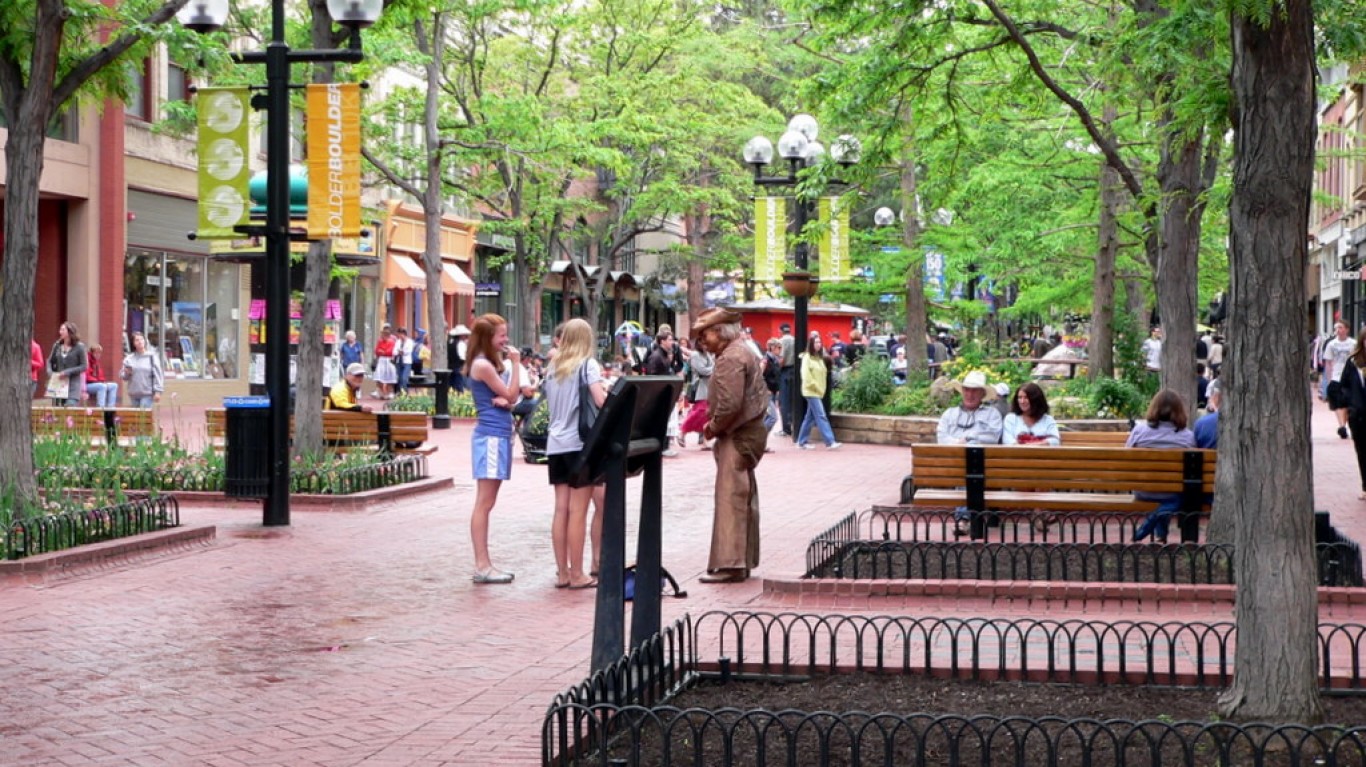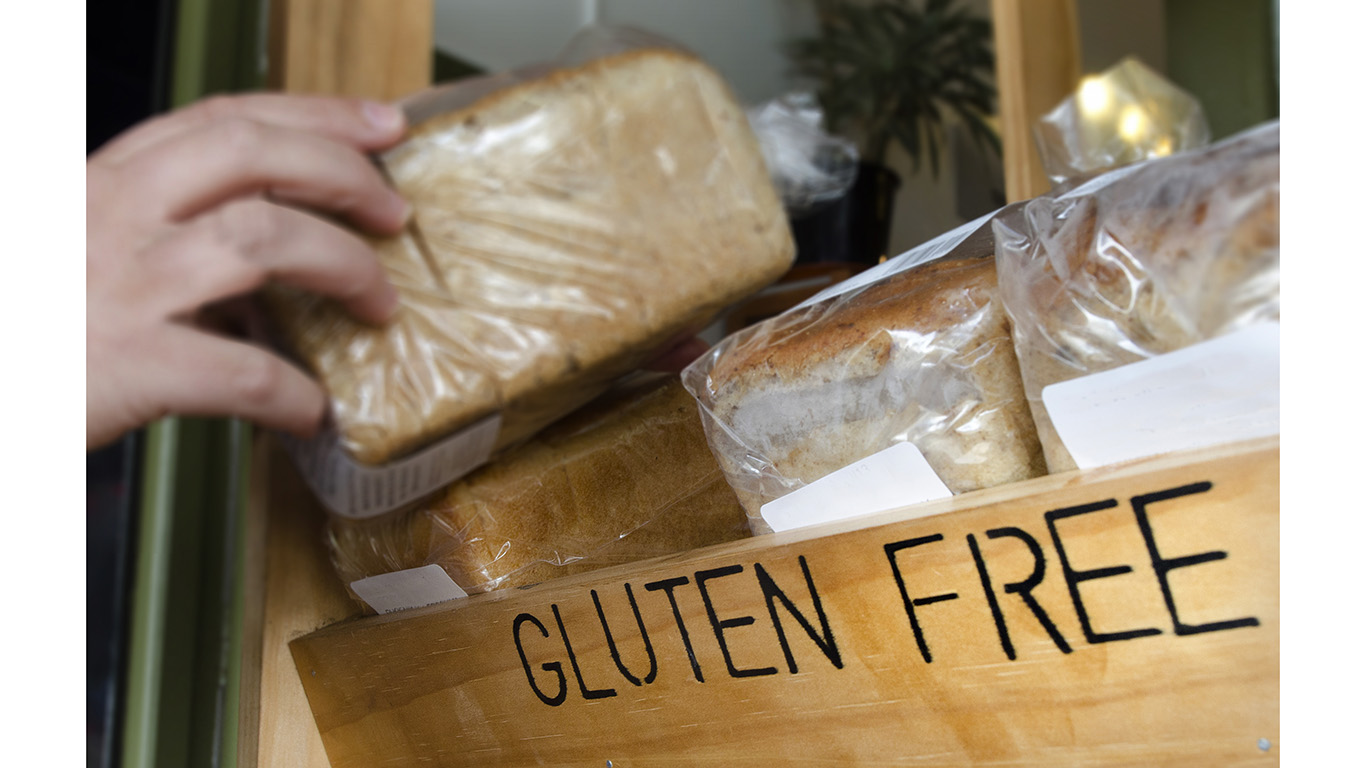
Many people aspire to be healthy, and good habits, including being physically active, can certainly help. However, there are obstacles that may prevent a person from maintaining a consistently active daily routine. With many gyms across the country closed or allowed to open with limited capacity due to the coronavirus pandemic, staying active may be a challenge. Another obstacle may be one’s place of residence. Some cities don’t have many parks and other outdoor places to exercise.
To determine the best cities for active people, 24/7 Tempo constructed a weighted index of five measures: workers who commute by walking; recreational sports facilities per capita; the share of people with easy access to venues for exercise; people who regularly exercise; and the area’s rank as being pedestrian and cyclist friendly.
Twelve of the 25 best cities for active people are in the West, eight of them specifically in California and Colorado. It is likely that a combination of environmental factors such as weather contribute to the higher shares of adults who regularly exercise in those cities — these are the 50 cities getting the most exercise.
Even little time spent exercising can contribute to maintaining healthy weight. The share of adults who are obese is notably lower in metropolitan areas ranked as the best for active people. The adult obesity rate is lower than the national rate of approximately 29.0% in 24 cities on this list, and it’s equal in only one.
Similarly, the average share of adults who live in the best cities for those leading a physically active lifestyle and report being in poor or fair health is higher than the national average of 17.2% in all 25 cities on the list.
Click here to see the 25 best cities for active people.
Click here to read our detailed methodology.
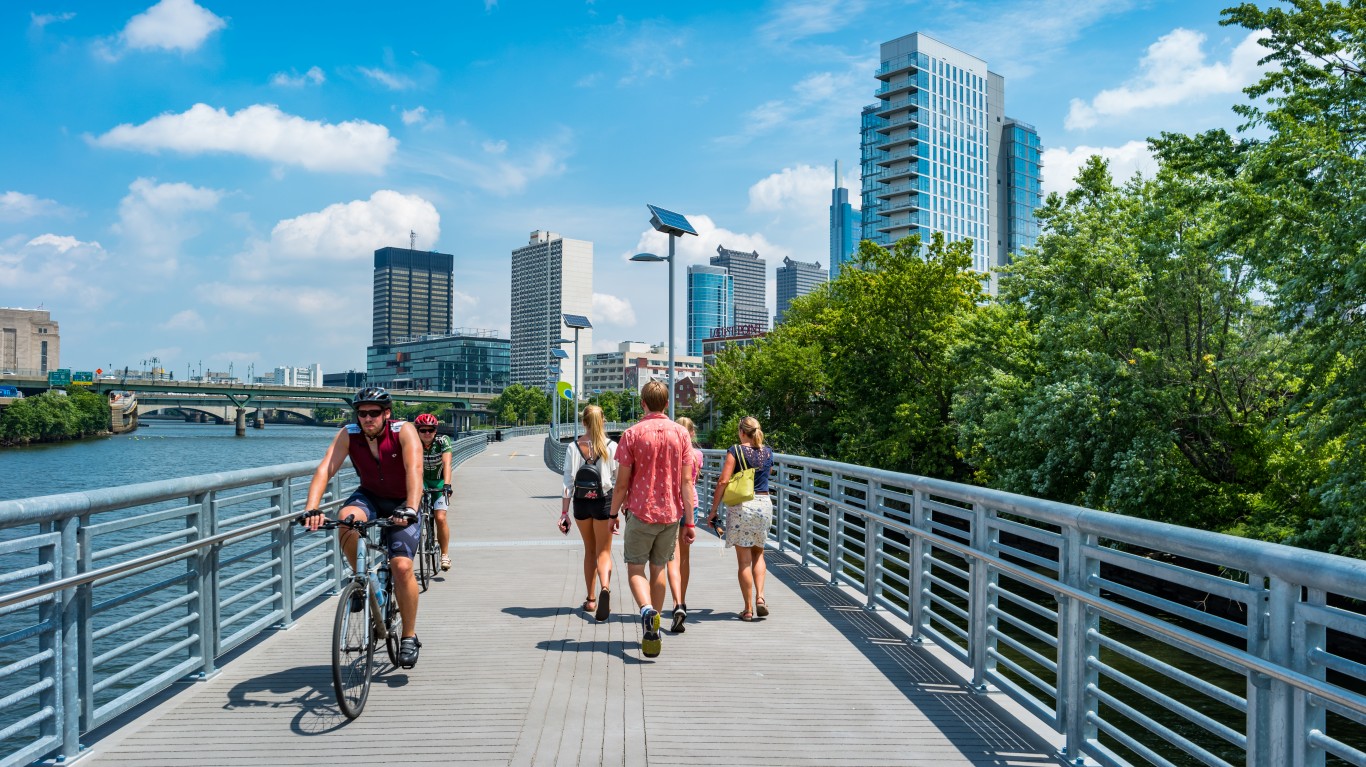
25. Philadelphia-Camden-Wilmington, Pennsylvania
> Adults who exercise regularly: 77.5% (national average: 76.7% )
> Workers who walk to their jobs: 3.6% (national average: 2.6%)
> Adult obesity rate: 27.8% (national average: 29.0%)
> Adults in poor or fair health: 16.4% (national average: 17.2%)
> Median household income: $74,533 (national average: $65,712)
Adults living in the broader Philadelphia metro area are more likely to regularly engage in physical activity than the typical American adult. Metro area residents benefit from an environment that is conducive to exercise, as Philadelphia ranks among the top five most walkable cities in the United States, according to WalkScore.com. Additionally, nearly 93% of the population lives in close proximity to areas for physical recreation, such as gyms, parks, or recreation centers.
Regular exercise can make it easier to maintain a healthy weight, and in Philadelphia, only 27.8% of the adult population is obese, compared to 29.0% of adult Americans nationwide.
[in-text-ad]
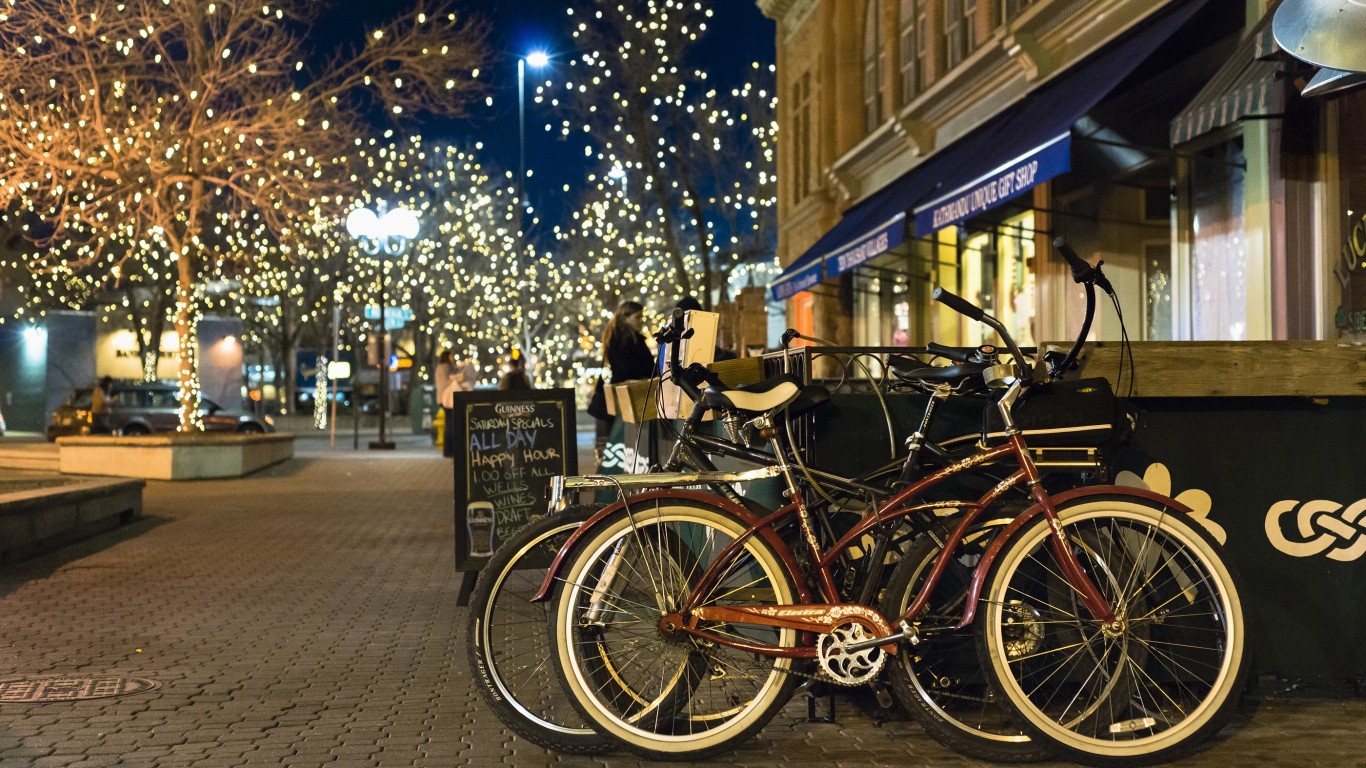
24. Fort Collins, Colorado
> Adults who exercise regularly: 86.9% (national average: 76.7% )
> Workers who walk to their jobs: 2.6% (national average: 2.6%)
> Adult obesity rate: 20.2% (national average: 29.0%)
> Adults in poor or fair health: 11.7% (national average: 17.2%)
> Median household income: $75,186 (national average: $65,712)
Fort Collins, Colorado is home to one of the most physically active populations in the country. Nearly 87% of adults in the metro area exercise, a larger share than in all but three other U.S. metro areas and well above the 76.7% share of adults nationwide who do.
Fort Collins residents also benefit from having access to places for physical activity. An estimated 92.8% of the population lives in close proximity to places like parks and recreation centers, well above the 84.2% share of the population nationwide.

23. Chicago-Naperville-Elgin, Illinois
> Adults who exercise regularly: 79.1% (national average: 76.7% )
> Workers who walk to their jobs: 3.0% (national average: 2.6%)
> Adult obesity rate: 29.0% (national average: 29.0%)
> Adults in poor or fair health: 16.2% (national average: 17.2%)
> Median household income: $75,379 (national average: $65,712)
One of the most walkable and most bike-friendly cities in the country, Chicago has a lot to offer those who lead physically active lifestyles. An estimated 97.4% of residents of the broader Chicago metro area have easy access to places like gyms, parks, and recreation centers, a far larger share than the 84.2% share of the population nationwide.
Metro area residents also appear likely to take advantage of these opportunities, as 79.1% of the local adult population reports regular physical activity, compared to 76.7% of adults nationwide.
22. San Diego-Chula Vista-Carlsbad, California
> Adults who exercise regularly: 85.6% (national average: 76.7% )
> Workers who walk to their jobs: 2.9% (national average: 2.6%)
> Adult obesity rate: 20.3% (national average: 29.0%)
> Adults in poor or fair health: 14.5% (national average: 17.2%)
> Median household income: $83,985 (national average: $65,712)
Few U.S. metro areas have populations who are as physically active as San Diego. More than 85% of adults in the metro area report regular physical activity, about 9 percentage points above the national physical activity rate.
The active lifestyles in the metro area may be attributable in part to environmental circumstances. Not only does San Diego have warm and moderate weather year round, but also 97.0% of residents have easy access to places like gyms and parks, one of the largest such shares of any U.S. metro area.
[in-text-ad-2]

21. Ann Arbor, Michigan
> Adults who exercise regularly: 84.7% (national average: 76.7% )
> Workers who walk to their jobs: 7.1% (national average: 2.6%)
> Adult obesity rate: 24.5% (national average: 29.0%)
> Adults in poor or fair health: 11.9% (national average: 17.2%)
> Median household income: $76,576 (national average: $65,712)
Ann Arbor is the only metropolitan area in Michigan to rank on this list. The city is among the most pedestrian friendly in the country, as 7.1% of commuters walk to their job, well more than double the 2.6% share of workers nationwide who do. Additionally, about nine in every 10 Ann Arbor residents have easy access to places like recreation centers and parks, a larger share than the 84.2% of Americans nationwide who do.
With walkable streets and easy access to parks and gyms, it is perhaps not surprising that Ann Arbor residents generally lead active lifestyles. Nearly 85% of adults in the metro area report regular exercise, compared to about 77% of American adults nationwide.
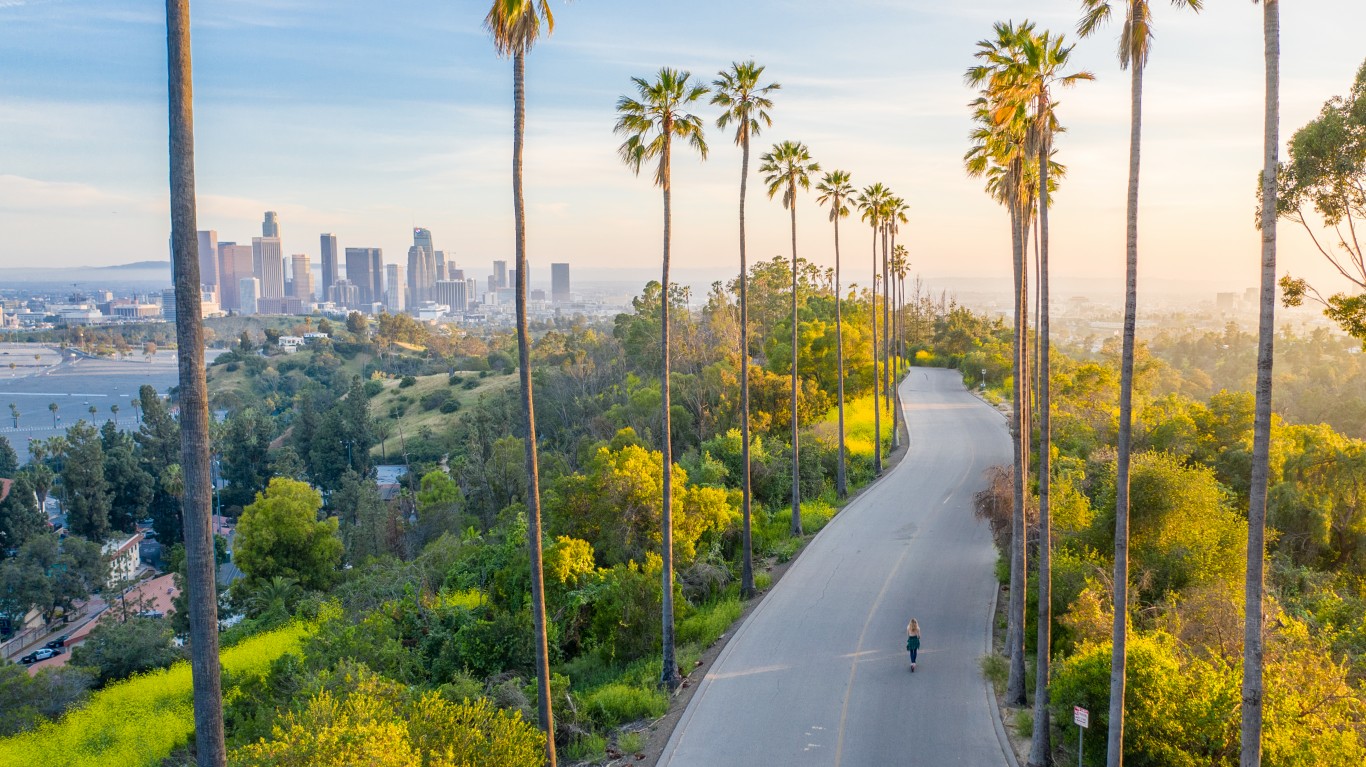
20. Los Angeles-Long Beach-Anaheim, California
> Adults who exercise regularly: 83.9% (national average: 76.7% )
> Workers who walk to their jobs: 2.5% (national average: 2.6%)
> Adult obesity rate: 21.2% (national average: 29.0%)
> Adults in poor or fair health: 15.8% (national average: 17.2%)
> Median household income: $77,774 (national average: $65,712)
Los Angeles is one of several California metro areas to rank on this list. Nearly 84% of adults living in the broader L.A. metro area report regular exercise, one of the highest physical activity rates of any U.S. metro area.
Regular exercise can aid in maintaining a healthy weight and also contribute to improved overall well being. Across L.A., only 21.2% of adults are obese, well below the 29.0% national adult obesity rate. Additionally, just 15.8% of area adults report being in fair or poor health, compared to 17.2% of adults nationwide.
[in-text-ad]

19. Santa Cruz-Watsonville, California
> Adults who exercise regularly: 88.6% (national average: 76.7% )
> Workers who walk to their jobs: 4.7% (national average: 2.6%)
> Adult obesity rate: 19.0% (national average: 29.0%)
> Adults in poor or fair health: 15.2% (national average: 17.2%)
> Median household income: $89,269 (national average: $65,712)
Santa Cruz, California, has nearly the most physically active population of any U.S. metro area. Nearly 89% of adults in the city have active lifestyles, compared to 76.7% of American adults. Regular exercise can make it easier to maintain a healthy weight, and the Santa Cruz metro area has one of the lowest obesity rates in the country. Just 19.0% of adults in the area are obese, 10 percentage points below the 29.0% national obesity rate.
Like many cities on this list, Santa Cruz is relatively pedestrian friendly. An estimated 4.7% of workers in the area commute by walking, nearly double the 2.6% share of workers nationwide who do.
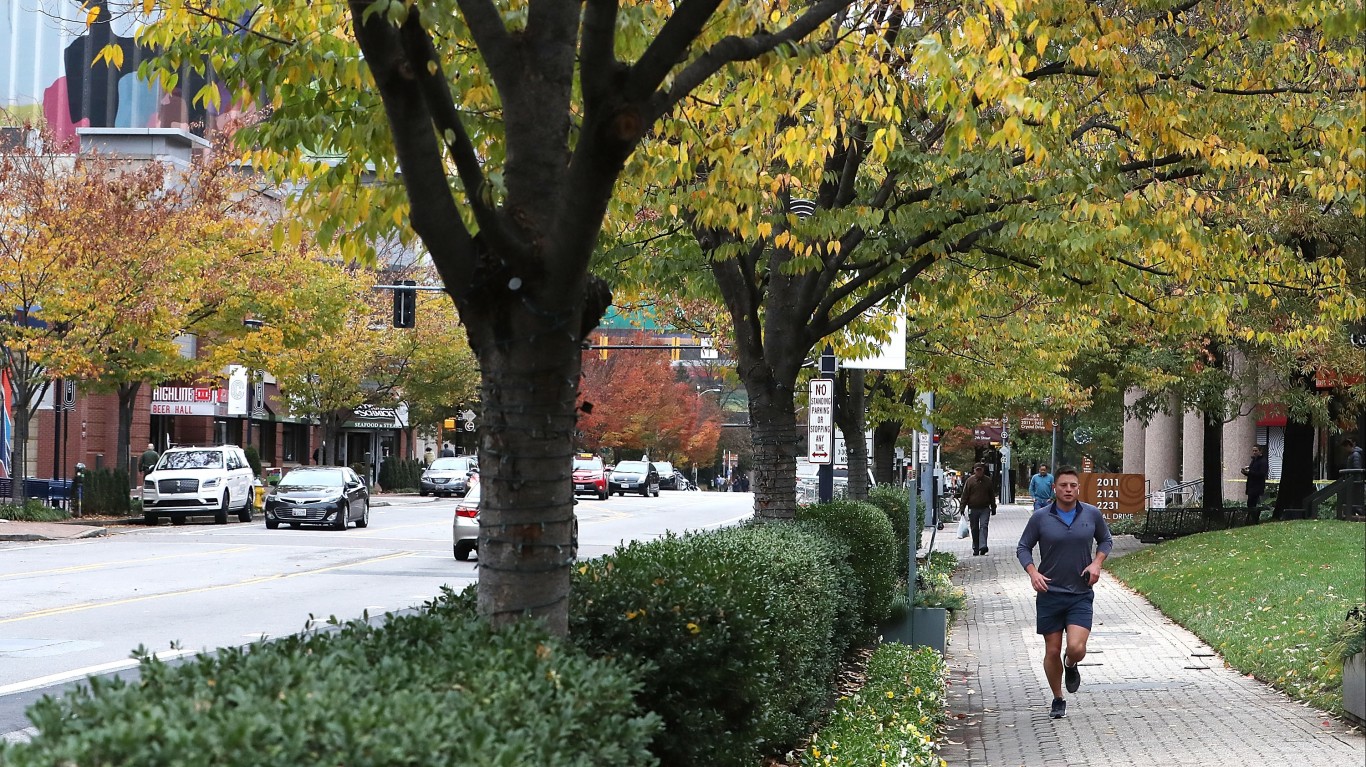
18. Washington-Arlington-Alexandria, D.C. and Virginia
> Adults who exercise regularly: 81.2% (national average: 76.7% )
> Workers who walk to their jobs: 3.3% (national average: 2.6%)
> Adult obesity rate: 28.0% (national average: 29.0%)
> Adults in poor or fair health: 12.5% (national average: 17.2%)
> Median household income: $105,659 (national average: $65,712)
The metro area around the nation’s capital is one of the best parts of the country for people with physically active lifestyles. An estimated 94.9% of metro area residents have easy access to places for physical activity, such as gyms, parks, and recreation centers. Meanwhile, only about 84.2% of Americans nationwide have similar access. Perhaps not surprisingly, adults in the metro area are more likely to exercise than the typical American adult.
Regular exercise can go a long way to improving overall well-being, and in Washington D.C., just 12.5% of adults report being in fair or poor health — a far smaller share than the 17.2% of adults nationwide who do.
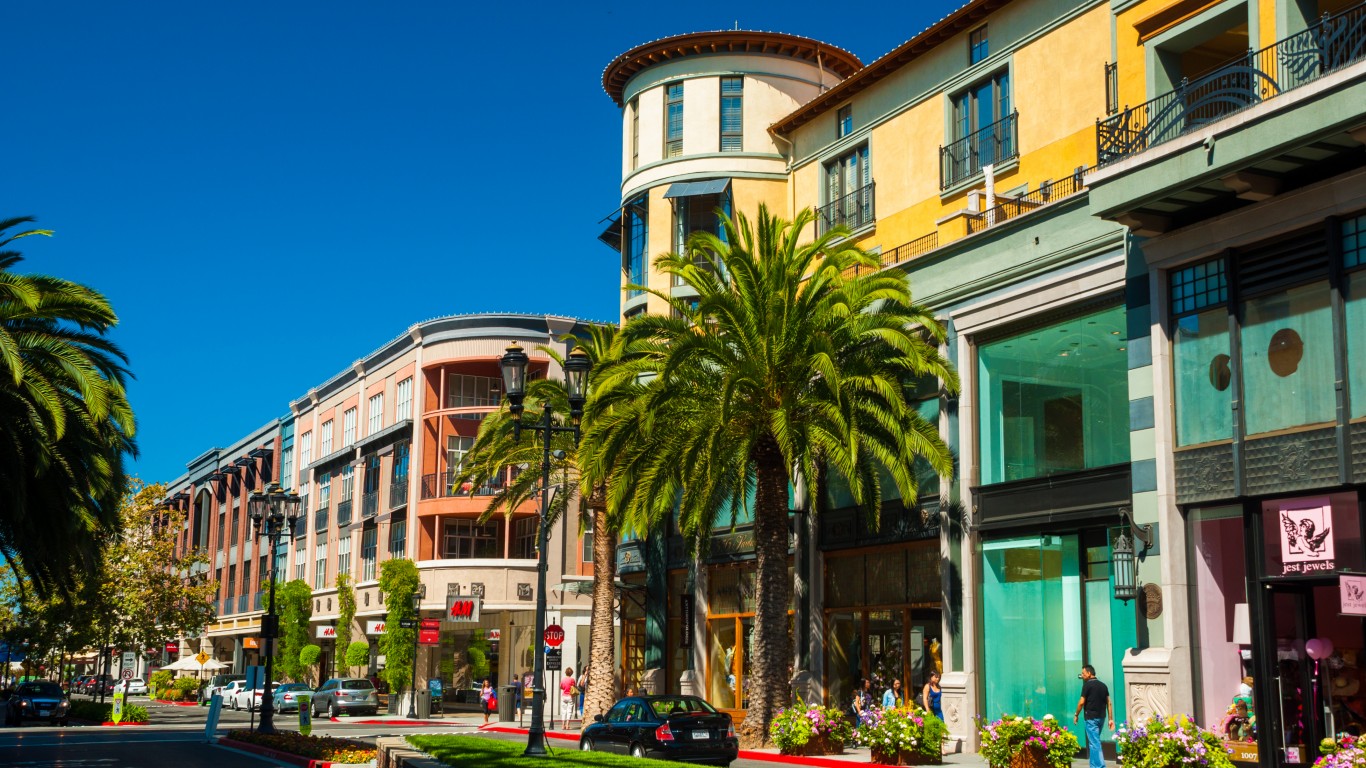
17. San Jose-Sunnyvale-Santa Clara, California
> Adults who exercise regularly: 83.8% (national average: 76.7% )
> Workers who walk to their jobs: 2.0% (national average: 2.6%)
> Adult obesity rate: 20.0% (national average: 29.0%)
> Adults in poor or fair health: 12.3% (national average: 17.2%)
> Median household income: $130,865 (national average: $65,712)
The metro area around California’s Silicon Valley is one of the best places for Americans with active lifestyles. In addition to a climate conducive to outdoor activity, San Jose boasts a number of places like parks and recreation centers spread across the metro area. An estimated 98.1% of the population has access to places for physical activity, compared to just 84.2% of the U.S. population. Likely partially as a result, adults in the Silicon Valley area are far more likely than the typical American adult to exercise regularly.
[in-text-ad-2]

16. Minneapolis-St. Paul-Bloomington, Minnesota
> Adults who exercise regularly: 81.9% (national average: 76.7% )
> Workers who walk to their jobs: 2.3% (national average: 2.6%)
> Adult obesity rate: 26.6% (national average: 29.0%)
> Adults in poor or fair health: 10.8% (national average: 17.2%)
> Median household income: $83,698 (national average: $65,712)
The Twin Cities metro area is by far the best metro area in Minnesota — and 16th best nationwide — for people who are physically active. About 95% of the metro area population has access to places for physical activity such as gyms, parks, and recreation centers. Adults in the area are also far more likely to exercise regularly than the typical American adult.
Regular exercise can greatly improve overall well-being, and the Minneapolis metro area appears to have a relatively healthy population. Only 10.8% of adults in the area report being fair or poor health, compared to 17.2% of American adults nationwide.
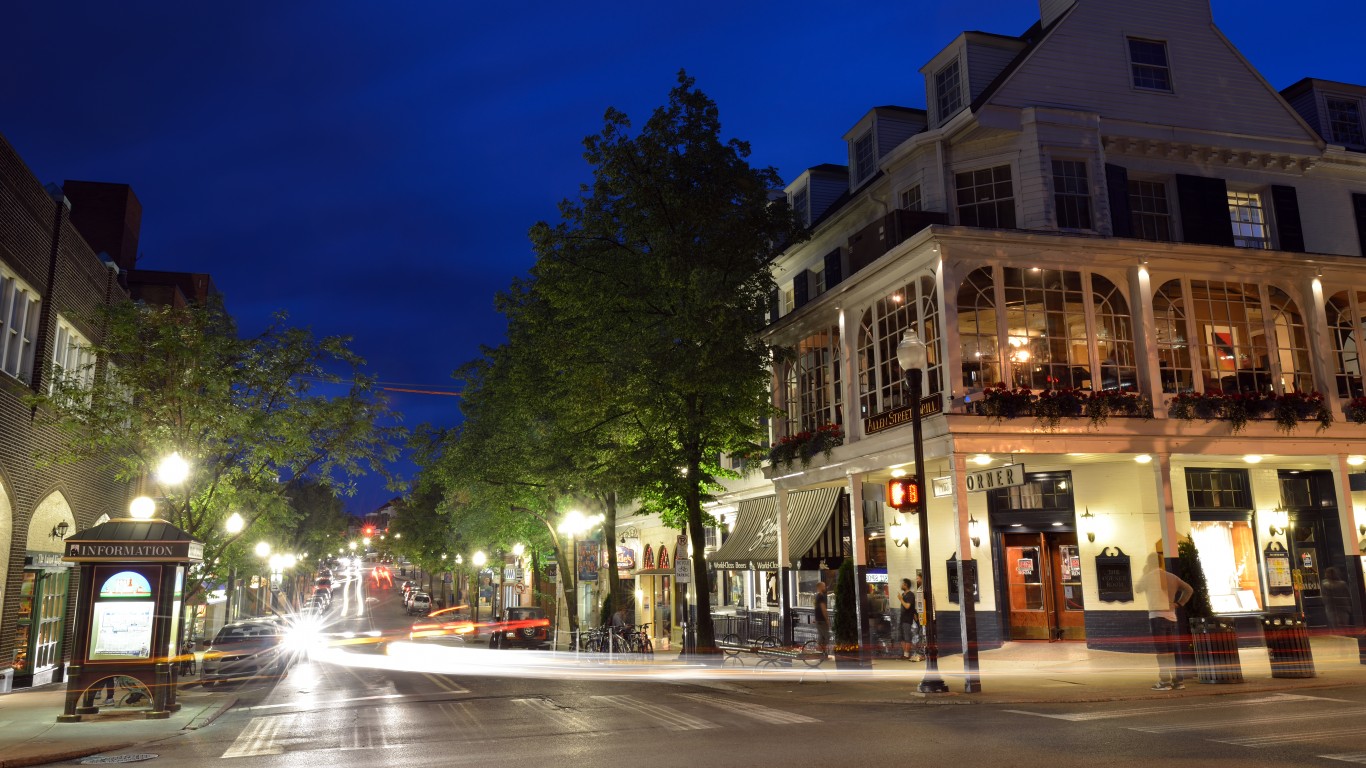
15. State College, Pennsylvania
> Adults who exercise regularly: 81.9% (national average: 76.7% )
> Workers who walk to their jobs: 8.9% (national average: 2.6%)
> Adult obesity rate: 25.2% (national average: 29.0%)
> Adults in poor or fair health: 15.3% (national average: 17.2%)
> Median household income: $60,706 (national average: $65,712)
State College, Pennsylvania, is one of the most pedestrian friendly metro areas in the United States. An estimated 8.9% of workers commute to their job by walking, more than three times the 2.6% share of workers nationwide who do. The city’s walkability likely contributes to the larger than average share of adults in the area who report physically active lifestyles.
Regular exercise can have a multitude of health benefits, including greater likelihood of maintaining a healthy weight. In State College, only about a quarter of adults are obese, compared to 29% of adults nationwide.
[in-text-ad]

14. Portland-Vancouver-Hillsboro, Oregon
> Adults who exercise regularly: 84.5% (national average: 76.7% )
> Workers who walk to their jobs: 3.3% (national average: 2.6%)
> Adult obesity rate: 28.1% (national average: 29.0%)
> Adults in poor or fair health: 13.4% (national average: 17.2%)
> Median household income: $78,439 (national average: $65,712)
Portland is one of two metro areas in Oregon to rank on this list. The city ranks as one of the most walkable in the United States and is also regularly cited as one of the top cities for cyclists in the country. In addition, an estimated 94.3% of those living in the broader Portland metro area have easy access to places like parks and recreation centers for exercise — compared to only about 84.2% of Americans nationwide who do.
Walkable, bikeable, and full of amenities like parks, Portland is also home to a relatively physically active population. Nearly 85% of adults in the metro area report regular physical activity — compared to about 77% of adults nationwide who do.
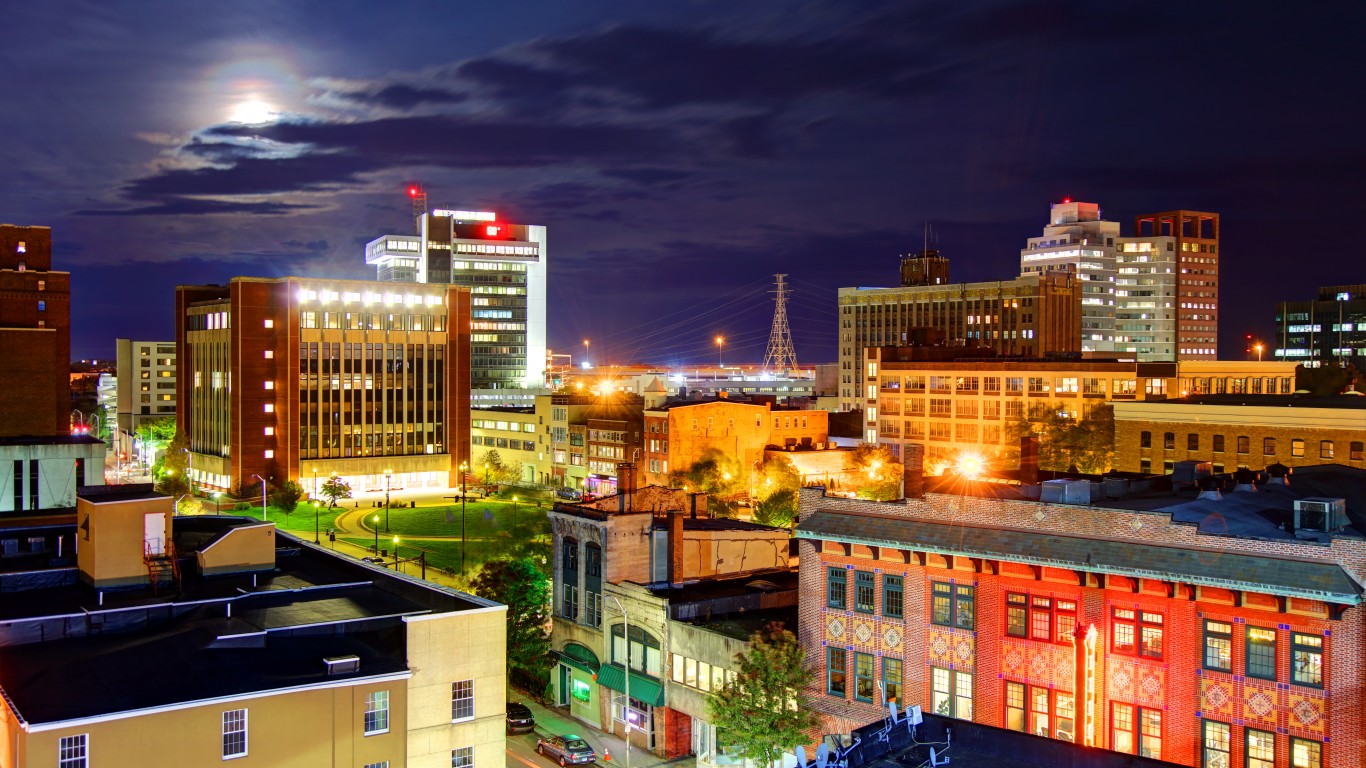
13. Bridgeport-Stamford-Norwalk, Connecticut
> Adults who exercise regularly: 82.3% (national average: 76.7% )
> Workers who walk to their jobs: 2.5% (national average: 2.6%)
> Adult obesity rate: 21.3% (national average: 29.0%)
> Adults in poor or fair health: 10.6% (national average: 17.2%)
> Median household income: $97,053 (national average: $65,712)
Bridgeport-Stamford-Norwalk is the only metro area in Connecticut to make this list. One of the reasons the city ranks on this list is the area’s large share of residents who live near places for physical activity. And many appear to be taking advantage of this opportunity as over 82% report exercising regularly, much higher than the nearly 77% of American adults.
Regular exercise can greatly improve overall well-being. The metro area’s adult obesity rate is 21.3%, far lower than the national rate of 29.0%. Additionally, just 10.6% of adults report being in poor or fair health, a far smaller share than the 17.2% of Americans who do.
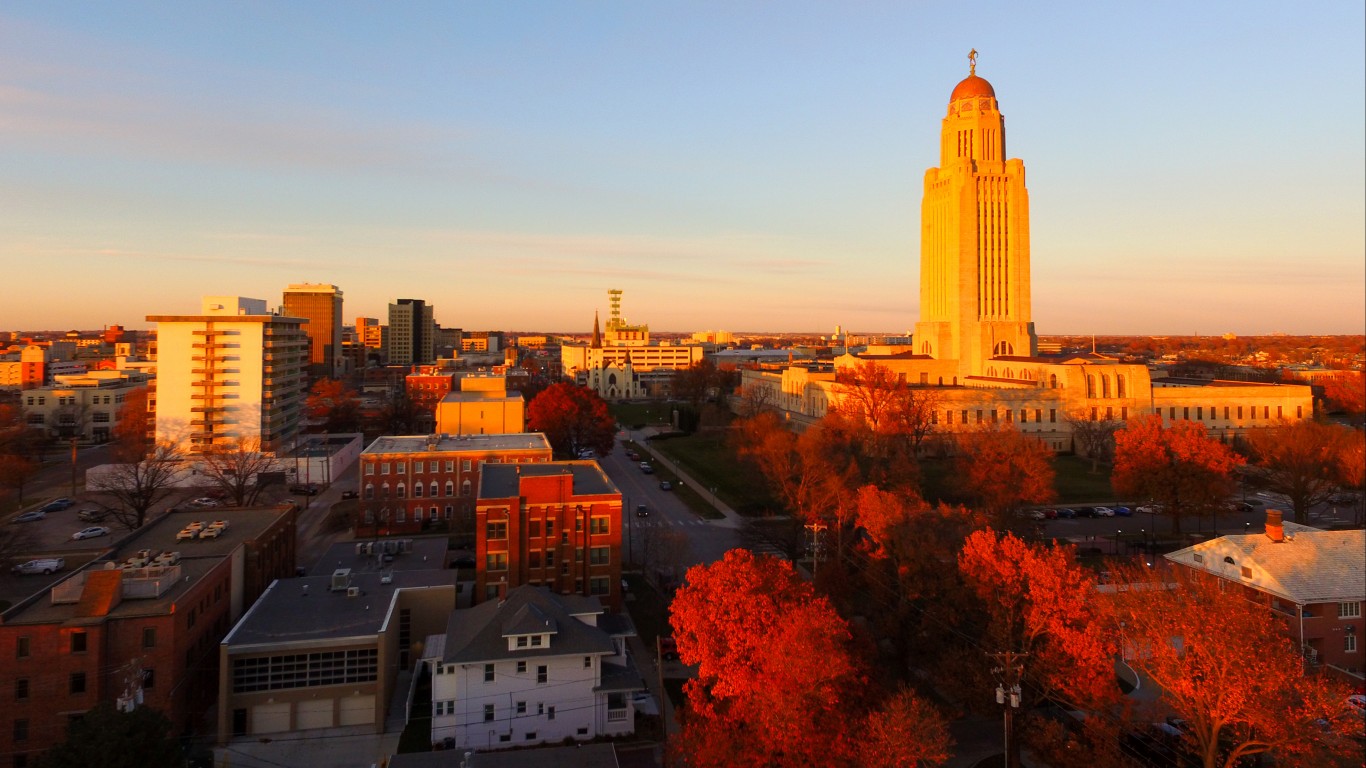
12. Lincoln, Nebraska
> Adults who exercise regularly: 82.2% (national average: 76.7% )
> Workers who walk to their jobs: 3.3% (national average: 2.6%)
> Adult obesity rate: 28.8% (national average: 29.0%)
> Adults in poor or fair health: 13.5% (national average: 17.2%)
> Median household income: $61,539 (national average: $65,712)
Lincoln is the only metro area in Nebraska to make the list of the best U.S. cities for people who lead a physically active lifestyle. This is largely due to the area’s higher than average concentration of fitness and recreational sports centers per 100,000 residents.
Adults in Lincoln are more likely to exercise regularly than the typical American adult, and staying physically active can benefit overall well-being and improve mental health. In Lincoln, only 16.7% of residents have been diagnosed with depression, less than the 19.7% share of adults nationwide.
[in-text-ad-2]

11. Seattle-Tacoma-Bellevue, Washington
> Adults who exercise regularly: 84.4% (national average: 76.7% )
> Workers who walk to their jobs: 4.0% (national average: 2.6%)
> Adult obesity rate: 26.1% (national average: 29.0%)
> Adults in poor or fair health: 12.8% (national average: 17.2%)
> Median household income: $94,027 (national average: $65,712)
Seattle-Tacoma-Bellevue is one of the most walkable and bike-friendly metro areas in the country. The area’s walkability and accessible places for physical activity such as gyms, urban parks, and recreational facilities may contribute to the larger than the national average share of adults who exercise on a regular basis.
Regular exercise may help people stay healthy, and in the larger Seattle metropolitan area, just 12.8% of adults report being in poor or fair health, a smaller share than the 17.2% of adults nationwide who report similar health.

10. New York-Newark-Jersey City, New York
> Adults who exercise regularly: 74.9% (national average: 76.7% )
> Workers who walk to their jobs: 5.9% (national average: 2.6%)
> Adult obesity rate: 24.3% (national average: 29.0%)
> Adults in poor or fair health: 16.8% (national average: 17.2%)
> Median household income: $83,160 (national average: $65,712)
New York City ranks as the most walkable city and one of the most bike-friendly cities in the U.S. The metro area has much to offer to people who like to be physically active. An estimated 97.5% of residents have easy access to places like gyms, parks, and recreation areas, significantly more than the 84.2% share of the population nationwide. Additionally, about 5.9% of workers walk to work, almost double the share of workers in the U.S. as a whole.
Despite the abundance of opportunities, only 74.9% of residents exercise regularly, slightly less than the national share of 76.7%. Some 16.8% of adults who live in the metro area report being in poor health, in line with the national average of 17.2%.
[in-text-ad]
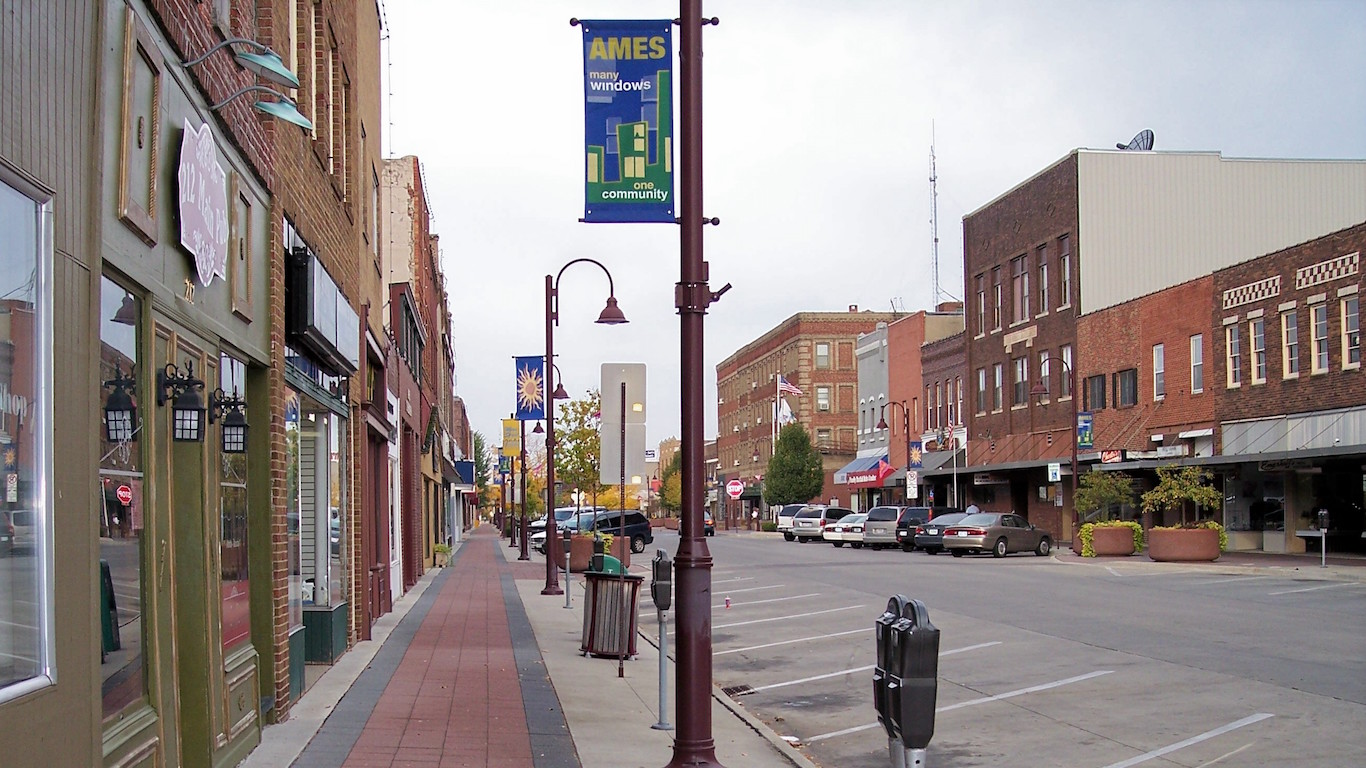
9. Ames, Iowa
> Adults who exercise regularly: 82.8% (national average: 76.7% )
> Workers who walk to their jobs: 7.2% (national average: 2.6%)
> Adult obesity rate: 26.2% (national average: 29.0%)
> Adults in poor or fair health: 12.5% (national average: 17.2%)
> Median household income: $62,181 (national average: $65,712)
The Ames metro area is the only one in Iowa to rank among the best in the country for people with active lifestyles. Ames boasts a relatively high concentration of places like parks and recreation centers, when adjusting for population.
About 93.1% of the population has easy access to a gym or another facility for physical activity, compared to 84.2% of the U.S. population. This may help explain, at least in part, the larger share of adults in Ames exercising regularly than the national average.

8. Missoula, Montana
> Adults who exercise regularly: 83.3% (national average: 76.7% )
> Workers who walk to their jobs: 5.2% (national average: 2.6%)
> Adult obesity rate: 22.2% (national average: 29.0%)
> Adults in poor or fair health: 13.9% (national average: 17.2%)
> Median household income: $57,347 (national average: $65,712)
Workers of the broader Missoula metro area are twice as likely to walk to work than the typical American commuter. Additionally, people may benefit from having easy access to places for physical activity. About 92.6% of the city population lives close to gyms, parks, and recreation centers, more than the national share of 84.2%.
Regular exercise can help maintain a healthy weight. In Missoula, about 22.2% of adult residents are obese, compared to 29.0% of American nationwide.

7. Denver-Aurora-Lakewood, Colorado
> Adults who exercise regularly: 85.1% (national average: 76.7% )
> Workers who walk to their jobs: 2.1% (national average: 2.6%)
> Adult obesity rate: 21.7% (national average: 29.0%)
> Adults in poor or fair health: 12.4% (national average: 17.2%)
> Median household income: $85,641 (national average: $65,712)
Denver-Aurora-Lakewood is one of three metropolitan areas in Colorado to rank on this list. The metro area is among the top five most bike-friendly cities in the country. However, Denver is one of five cities on this list where a smaller share of the workers population walks to work, compared to the rest of the U.S. as a whole. An estimated 96.6% of metro area residents have easy access to places for physical activity, far more than the 84.2% share of the population nationwide.
Denver-Aurora-Lakewood residents may be making the most of this opportunity, as 85.1% of adults report regularly exercising, compared to 76.7% of adults nationwide.
[in-text-ad-2]

6. Corvallis, Oregon
> Adults who exercise regularly: 86.8% (national average: 76.7% )
> Workers who walk to their jobs: 8.1% (national average: 2.6%)
> Adult obesity rate: 24.9% (national average: 29.0%)
> Adults in poor or fair health: 13.6% (national average: 17.2%)
> Median household income: $70,835 (national average: $65,712)
Corvallis is one of two Oregon metro areas to rank among the 25 best U.S. cities for active people. Workers in the area are more than three times as likely to walk to work than the typical worker nationwide. Metro area residents also take advantage of their easy access to places for physical activity. About 90.3% of residents live close to parks, gyms, or recreation centers, compared to 84.2% of people nationwide.
Maintaining an active lifestyle can help in maintaining a healthy weight, and in Corvallis, 24.9% of adults are obese, compared to 29.0% of American adults in the U.S. as a whole.

5. Ithaca, New York
> Adults who exercise regularly: 84.3% (national average: 76.7% )
> Workers who walk to their jobs: 13.8% (national average: 2.6%)
> Adult obesity rate: 22.7% (national average: 29.0%)
> Adults in poor or fair health: 13.6% (national average: 17.2%)
> Median household income: $58,626 (national average: $65,712)
Ithaca is one of two metropolitan areas in New York state to rank on this list and the city’s rank is largely because of how many people choose to walk to work. No other metro area in the U.S. has a larger share of the workers’ population commuting this way. About 13.8% of workers in Ithaca walk to their jobs, compared to 2.6% nationwide.
Walking is a form of exercise, and with walkable streets it may not be surprising that Ithaca residents lead a generally active lifestyle. As many as 84.3% of the metro area’s adults report regularly exercising, a larger share than the 76.7% of adults nationwide.
[in-text-ad]

4. San Francisco-Oakland-Berkeley, California
> Adults who exercise regularly: 85.2% (national average: 76.7% )
> Workers who walk to their jobs: 4.7% (national average: 2.6%)
> Adult obesity rate: 20.7% (national average: 29.0%)
> Adults in poor or fair health: 12.1% (national average: 17.2%)
> Median household income: $114,696 (national average: $65,712)
The San Francisco metropolitan area is among the top five most walkable and bike-friendly urban places in the country. An estimated 98.9% of residents have access to places for physical activity such as gyms or recreation centers, a far larger share than the 84.2% of the population in the U.S. as a whole.
Having easy access to exercise facilities may help explain the large share of adults who report regular physical activity, at 85.2%, compared to 76.7% of adults nationwide.
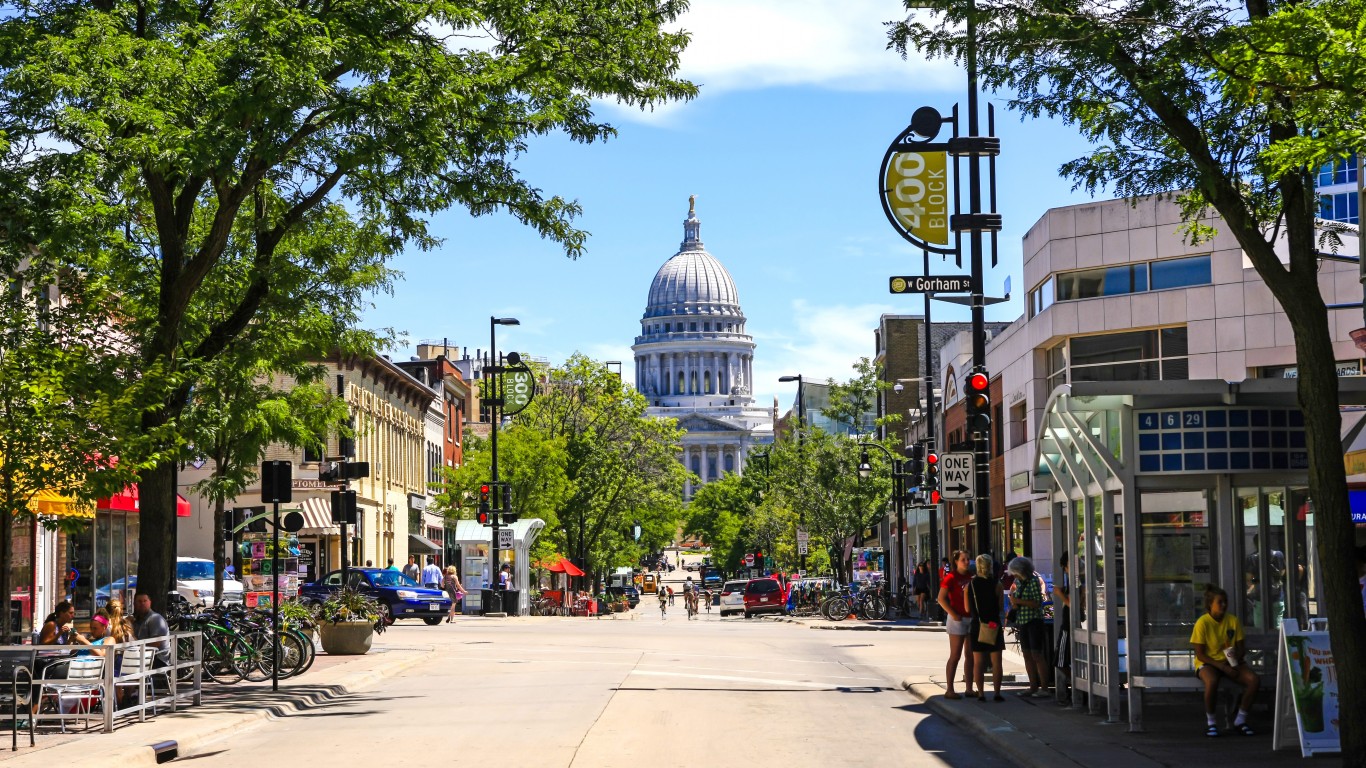
3. Madison, Wisconsin
> Adults who exercise regularly: 84.7% (national average: 76.7% )
> Workers who walk to their jobs: 5.1% (national average: 2.6%)
> Adult obesity rate: 26.9% (national average: 29.0%)
> Adults in poor or fair health: 12.0% (national average: 17.2%)
> Median household income: $75,545 (national average: $65,712)
Madison, Wisconsin, is home to some of the most physically active populations in the U.S. About 84.7% of adults report exercising on a regular basis, one of the largest shares of the 384 metro areas in the country and well above the national average of 76.7%.
Some of the benefits of exercise include both better physical and mental health. Madison’s adult residents report fewer unhealthy physical days and fewer unhealthy mental days than the average number of days adults nationwide do.
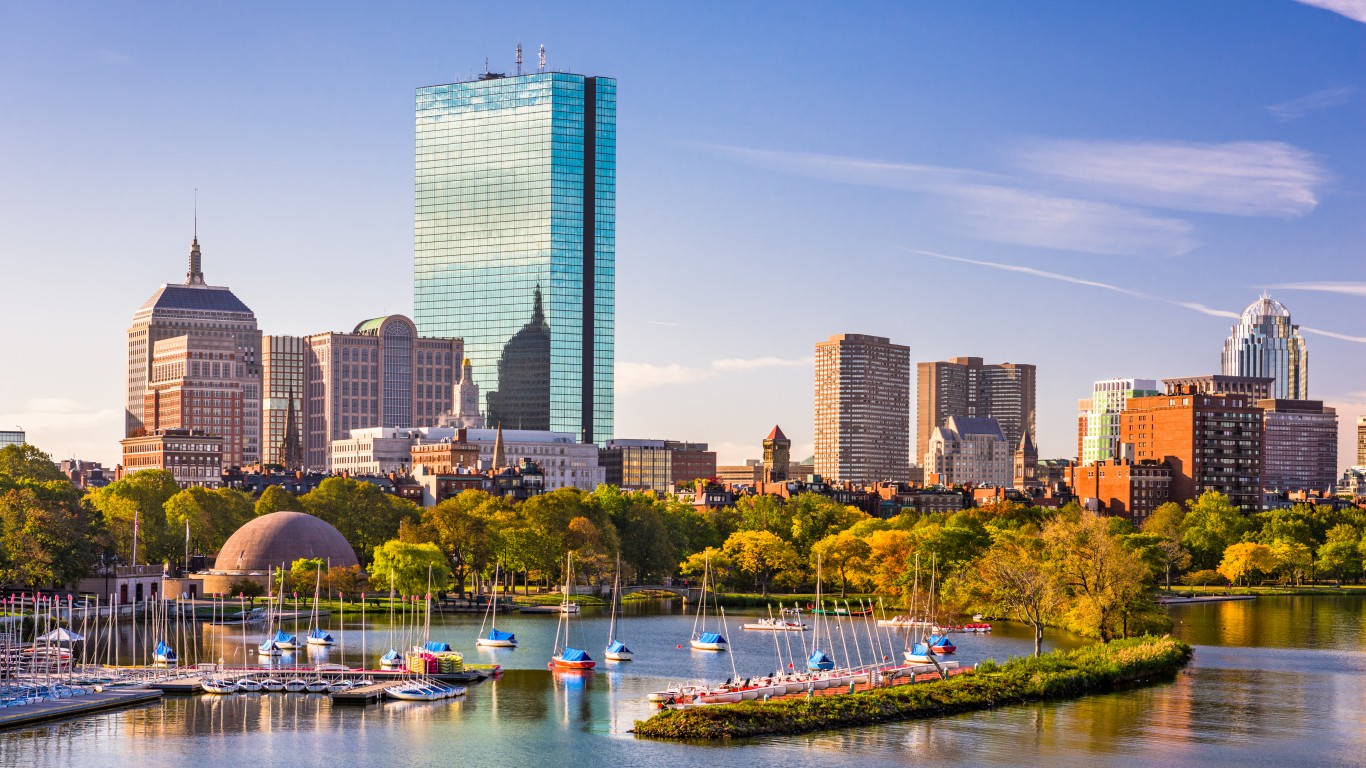
2. Boston-Cambridge-Newton, Massachusetts
> Adults who exercise regularly: 79.8% (national average: 76.7% )
> Workers who walk to their jobs: 5.4% (national average: 2.6%)
> Adult obesity rate: 23.9% (national average: 29.0%)
> Adults in poor or fair health: 12.6% (national average: 17.2%)
> Median household income: $94,430 (national average: $65,712)
Workers of the larger Boston metropolitan area are more than twice as likely to walk to work as the typical American worker. People may have the incentive to walk more because of the city’s infrastructure, which includes pedestrian-friendly streets and neighborhoods. Boston ranks as the third most walkable city in the U.S. Additionally, it is also among the top 10 bike-friendly cities in the country.
Walking and biking are exercises that can help a person maintain overall well-being, and in Boston, only 12.6% of adults report being in poor or fair health, significantly less than the national average of 17.2%.
[in-text-ad-2]
1. Boulder, Colorado
> Adults who exercise regularly: 90.5% (national average: 76.7% )
> Workers who walk to their jobs: 5.0% (national average: 2.6%)
> Adult obesity rate: 15.2% (national average: 29.0%)
> Adults in poor or fair health: 11.6% (national average: 17.2%)
> Median household income: $88,535 (national average: $65,712)
Boulder ranks as the best metro area for physically active people among all 384 metro areas in the country. It’s the only U.S. city where more than 90% of adults report exercising on a regular basis. This may be due in part to the fact that 96.2% of the population lives in close proximity to a gym, park, or other recreational facility.
Exercising and staying active can help maintain a healthy weight. In the Boulder metropolitan area, only 15.2% of adult residents are obese, the second smallest share of all metro areas in the U.S. after Santa Fe, New Mexico and about half the national adult obesity rate of 29.0%.
Methodology
To identify the best and worst cities for active people, 24/7 Tempo constructed a weighted index of five measures: (1.) the share of workers who commute by walking, (2.) the number of fitness and recreational sports facilities for every 100,000 people, (3.) the share of the population with easy access to venues for exercise, (4.) the share of adults who regularly engage in physical activity in their leisure time, and (5.) how pedestrian and cyclist friendly an area is.
Data on commuters who walk was collected at the metropolitan area level from the U.S. Census Bureau’s 2019 American Community Survey.
Data on the number of fitness and recreational sports facilities that feature exercise and other active physical fitness conditioning per 100,000 people is from the Census Bureau’s 2018 County Business Patterns and was aggregated up to the metro area level.
Both the share of adults who have access to exercise facilities and the share of adults who are regularly physically active in their leisure time are for the most recent available period from County Health Rankings & Roadmaps, a collaboration between the Robert Wood Johnson Foundation and the University of Wisconsin Population Health Institute. These measures were also aggregated up to the county level.
Data on how pedestrian and cyclist friendly a given city is came from the 2020 City & Neighborhood Ranking for Bike Scores from WalkScore.com, a company that provides walkability services and apartment search tools. WalkScore measures areas based on an index of bike infrastructure, hills, destinations and road connectivity, and number of bike commuters. This data is reflective of the city proper, rather than the broader metro area.
Values selected for the index were standardized into Z-Scores, which assumes a mean of 0 and a standard deviation of 1. For metro areas spanning multiple cities within the Bike Score Rankings, the highest value for that metro area was used in the index.
100 Million Americans Are Missing This Crucial Retirement Tool
The thought of burdening your family with a financial disaster is most Americans’ nightmare. However, recent studies show that over 100 million Americans still don’t have proper life insurance in the event they pass away.
Life insurance can bring peace of mind – ensuring your loved ones are safeguarded against unforeseen expenses and debts. With premiums often lower than expected and a variety of plans tailored to different life stages and health conditions, securing a policy is more accessible than ever.
A quick, no-obligation quote can provide valuable insight into what’s available and what might best suit your family’s needs. Life insurance is a simple step you can take today to help secure peace of mind for your loved ones tomorrow.
Click here to learn how to get a quote in just a few minutes.
Thank you for reading! Have some feedback for us?
Contact the 24/7 Wall St. editorial team.
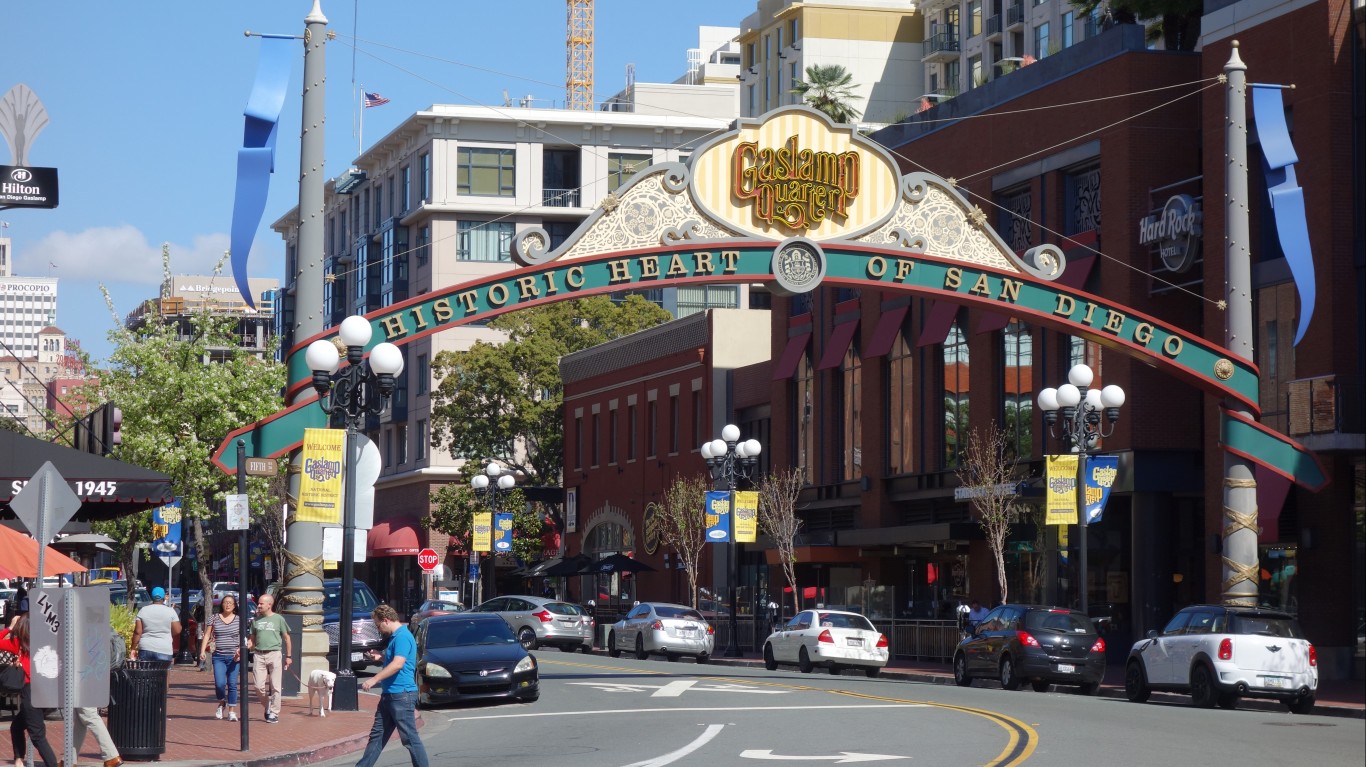
 24/7 Wall St.
24/7 Wall St.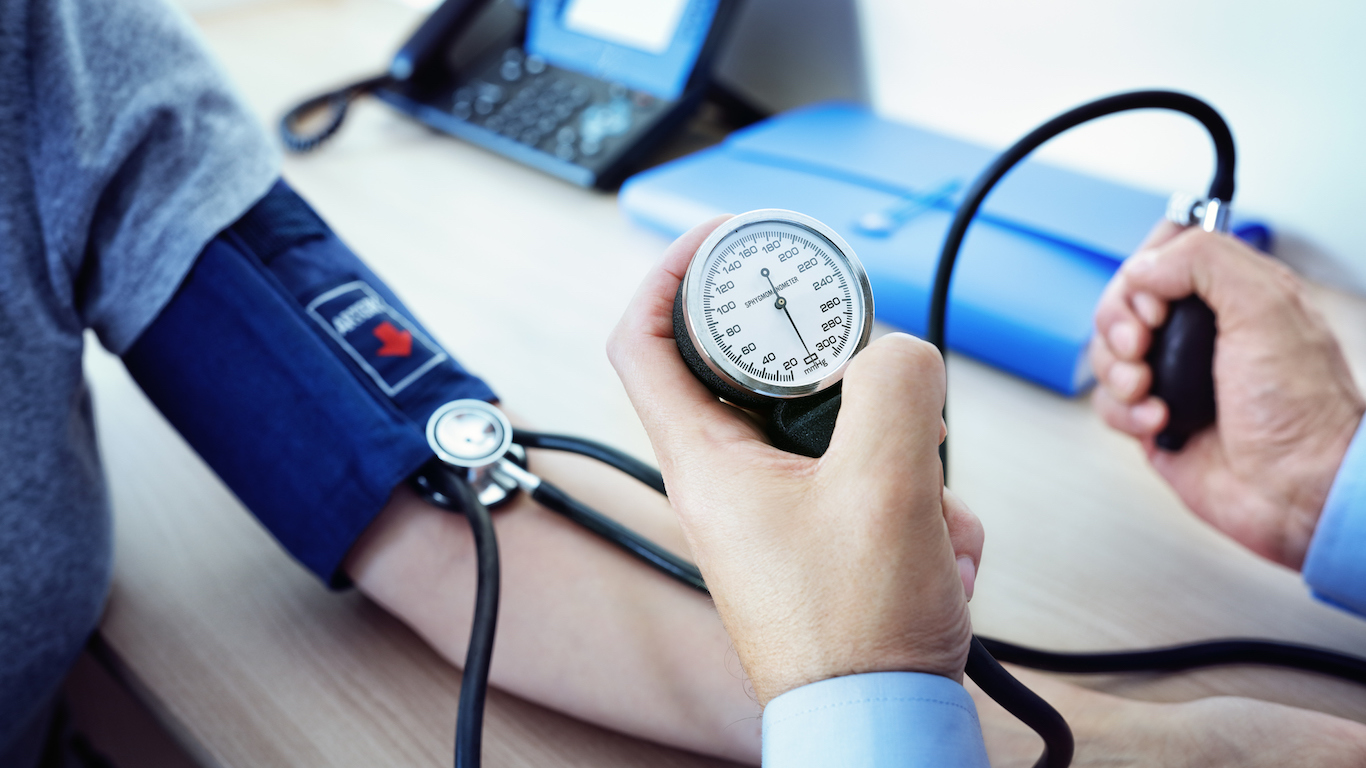 24/7 Wall St.
24/7 Wall St.